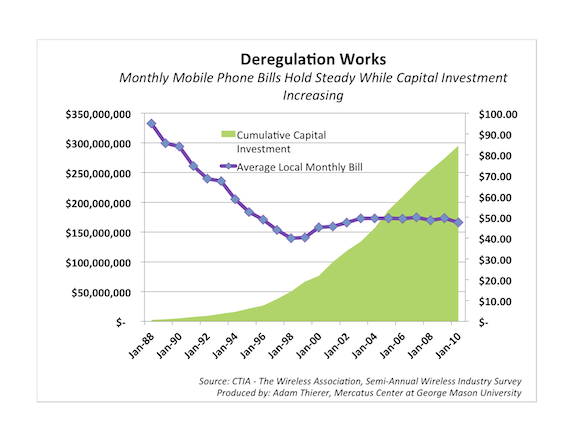- | Technology and Innovation Technology and Innovation
- | Data Visualizations Data Visualizations
- |
Deregulation Works: Monthly Mobile Phone Bills Hold Steady While Capital Investment Increasing
The data presented in this chart suggest that calls for more aggressive regulation of the wireless sector are unwarranted and would likely have a deleterious impact on consumer welfare.

Although it remains subject to some regulatory burdens and a variety of punishing taxes and fees, America’s wireless marketplace can be considered a great deregulatory success story. Over the past two decades, the cellular marketplace has generally been treated with a lighter regulatory touch than wireline communications and other sectors that the Federal Communications Commission regulates. The result of that light-touch approach speaks for itself.
Cumulative capital investment has grown from just $2.6 billion in 1988 to just under $300 billion in 2010. That is a stunning level of investment growth in capital-intensive sector. Meanwhile, prices plummeted throughout the 1990s and then plateaued over the past decade. While average local monthly bills stood close to $100 in 1988, today monthly service averages just $47. Importantly, however, the quality-adjusted price of service has improved markedly over the past decade. Consumers are getting much more for their money today than they did in the past. Internet access, texting, video, games, movies, and much more are all available over mobile handsets today. It’s not hyperbole to suggest that what we are carrying in our pockets and purses today is really more akin to a computer than a phone. Yet, competition and innovation keeps prices in check.
These statistics suggest that calls for more aggressive regulation of the wireless sector are unwarranted and would likely have a deleterious impact on consumer welfare.
